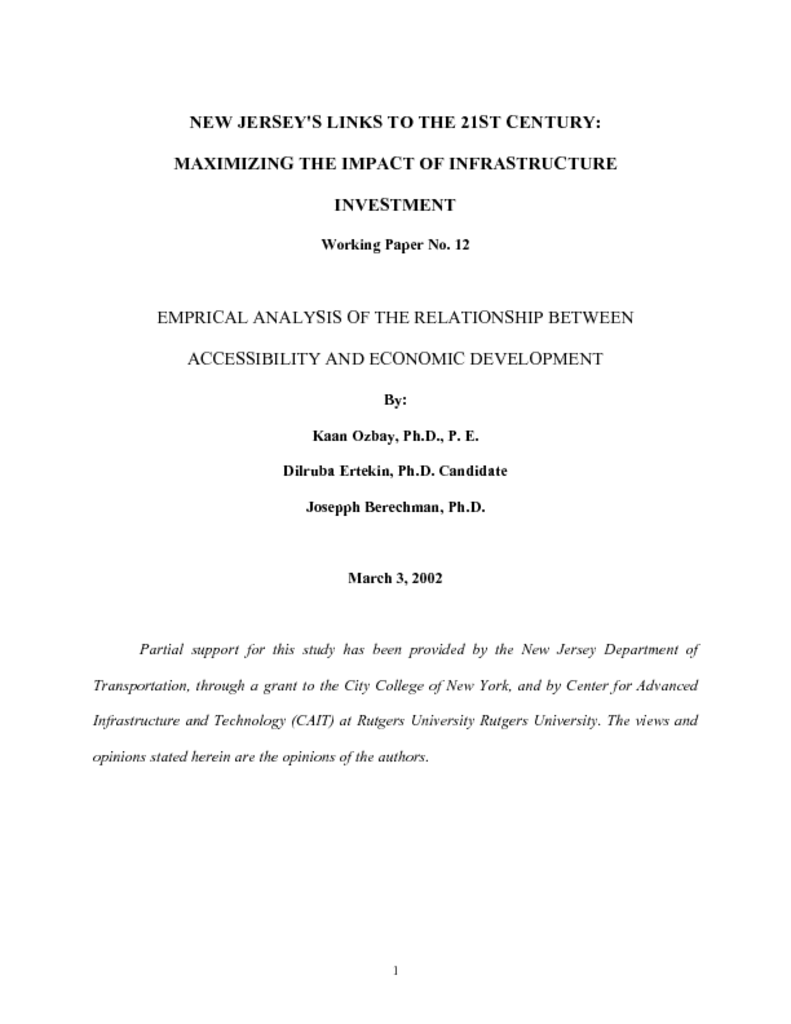One of the key factors that play a pivotal role in a region's economic well being is the presence of a reliable and efficient transportation infrastructure. This is mainly due to the fact that a well-developed transportation system provides adequate access to the region, which in turn, is a necessary condition for the efficient operation of manufacturing, retail, labor and housing markets. According to a recent report titled 'Infrastructure and Economic Development MetroPlan 2000' (BMAPC 1990), prepared by the Boston Metropolitan Area Planning Council, public infrastructure clearly influences land use and development patterns, zoning policies and general economic environment. According to this report, when the Erie Canal opened, the cost of transporting wheat between New York and Buffalo fell from $100/ton to $10/ton, providing the northeast with an early example of the benefits from accessibility improvements caused by transport infrastructure development. Presently, however, considering the highly developed in-place of transportation network there is a major debate among economists, planners or public officials regarding the impact of further transportation infrastructure development on regional economic growth (Banister and Berechman 2000). Figure 1 (Banister and Berechman 2000) depicts a general framework that describes the relationship between the transportation system and the economic growth. According to this framework, accessibility is improved as a result of investment in the existing transportation system. Improved accessibility, in turn, changes the travel and land use patterns and causes economic growth.




